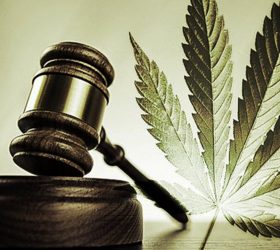Legalization of drugs is a highly complex choice for a government to make. There is a myriad of ethical perspectives and economic considerations to ponder before reaching a sound decision which could have ramifications for generations to come. The argument Gore Vidal uses in his essay simply entitled ‘Drugs’, is what is also referred to as the supply argument. Whereas the argument presented by Morton M. Kondracke in ‘Don’t Legalize Drugs’, is a more conservatively geared argument towards the issue of drug control. On the basis of quality of argument, Kondracke’s essay is a more persuasive essay, sufficiently loaded with research. Vidal’s essay, on the other hand, rests primarily on libertarian claims and unsupported popular beliefs associated with the supply argument.
The weaknesses in Vidal’s essay are mostly self-apparent. In the introductory paragraph he confesses that in order for drugs to be placed on the market producers will need to show ‘heroic honesty’. However it is futile to expect this from suppliers of any commodity let alone from those of narcotic products. In the next paragraph Vidal presents a personal example to illustrate a subjective viewpoint. It is well known that ‘all’ drugs are ‘bad’ for most people. In fact only ‘certain’ drugs are beneficial for certain people, when they happen to be prescribed. Vidal’s appeal to the constitution and civil liberties for the justifying drug use is completely flawed. Drug abuse is not an individual’s problem. It is directly linked to crime, it affects the families and loved ones of the addict, and rehabilitation and drug campaigns are a drain on taxpayer’s funds. Vidal’s attitude towards very reasonable fears of the anti-legalization camp is frivolous and works only to make the reader wary of his own claims. In fact many drugs do create a pathological and/or severe mental dependency. In that case most users would not be in control of their use. The essay ends on a befitting and grandiloquent, conspiratorial statement, where Vidal accuses everyone from the Bureau of Narcotics to the ‘American people’ for the victory of anti-legalization camp so far.
Kondracke’s essay is a much more balanced essay, with counter arguments weighted justly. Particularly enjoyable is Kondracke’s response to the Prohibition argument, put forth by proponents of legalization. It is noteworthy that a parallel between Prohibition and current drug laws is faulty mainly because alcohol consumption is not only more widely accepted but has been so for centuries. Drugs reserve a lot more notorious position in the eyes of the public. Drugs are a lot ‘harder’ come in a range of varieties, each chemically unique thus dangerous in different quantities, and producing different effects in different individuals. Kondracke then goes further ahead to use the Prohibition to further his argument. He predicts that using the Prohibition statistics, after legalization a tripling in the use of drugs may be reasonably expected. This in turn would raise the cost of drug abuse after legalization from $60 billion to $ 100 billion even after deducting the costs of drug related law enforcement. Young people being especially susceptible to the lure of drugs would be the biggest group to suffer from this surge of narcotics. It would only be a matter of time before the acceptance of drug use enters mainstream media and this could only mean a growing number of users and the consequent effects.
These considerations are an adequate counterweight for the reduction in organized crime argument used by those in favor of legalization. After all making everything legal is not a viable option to get rid of organized crime completely, but it is the only one guaranteed to do so. Kondracke’s essay ends on a well-rounded note discussing the proper solutions to the issue of drug use. This point is supported using government figures and studies. The relevant data suggests that more stringent controls on drug use like urine testing at school is the only way to tackle the demand side of the drugs problem effectively. This has been noted to work in many case studies, especially when the opportunity cost of drug use is a crease-free professional or academic life. Additionally, the attack on the supply side of the market is the hidden battle, waged under the garb of government confidentiality alongside. However it is imperative to realize that the campaign against drugs is not about philosophical implications involved but about protecting society at large.
Giving drug users ready access to the product might collapse the black market for drugs and associated crime in due time. However this victory would be short lived, with the advent of other bigger and more chronic problems to be associated with widespread drug use. Kondracke’s essay portrays a far more realistic and horrific picture of an America post legalization of drugs, where; productivity and labor participation rate is down; social responsibility has hit record lows; and an exponentially increasing burden of debilitated addicts now rests on the shoulders of a state recently freed from the burden of the drug mafia.
Contributed by Prescott Papers
